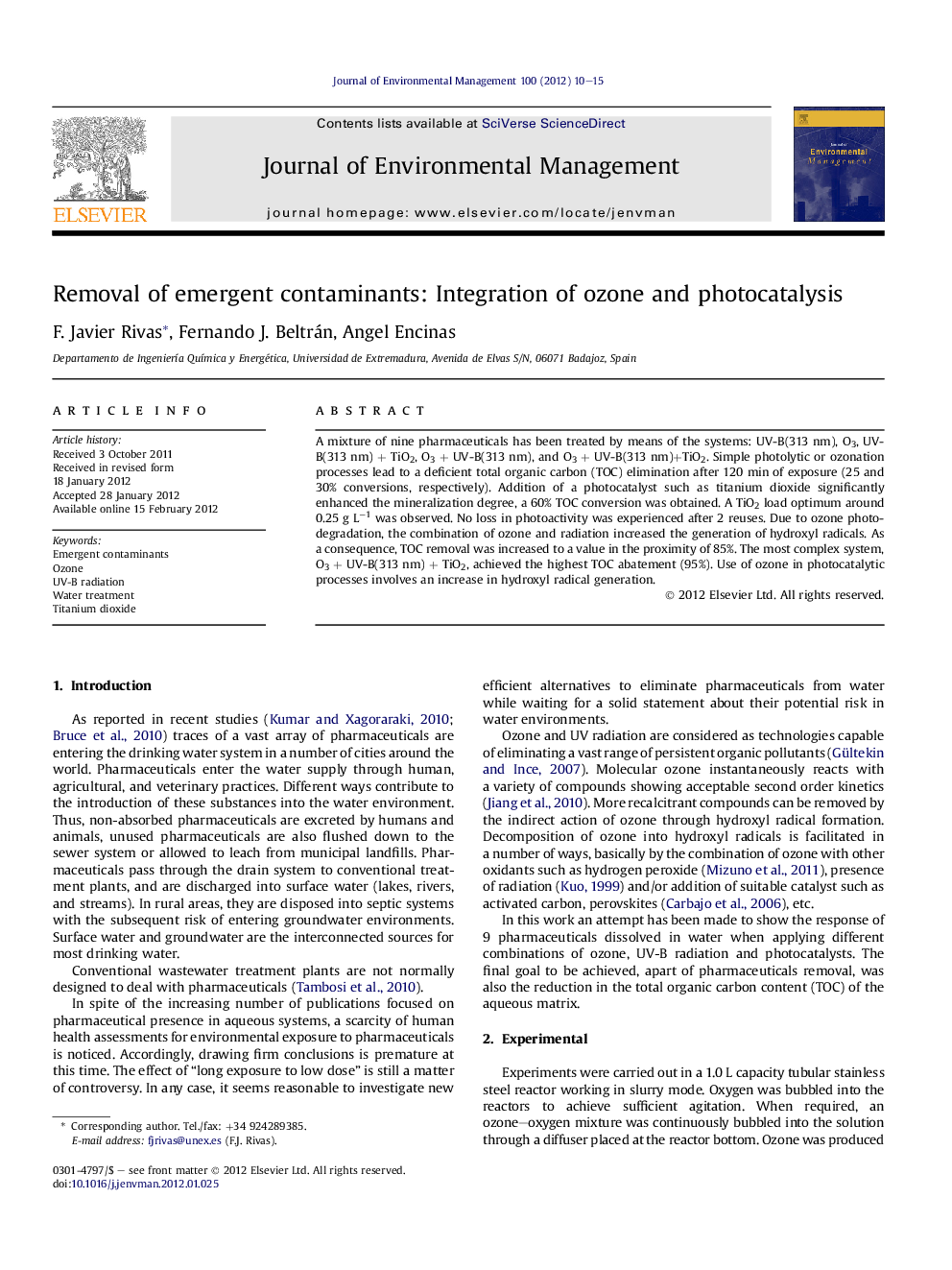| کد مقاله | کد نشریه | سال انتشار | مقاله انگلیسی | نسخه تمام متن |
|---|---|---|---|---|
| 1056746 | 1485312 | 2012 | 6 صفحه PDF | دانلود رایگان |

A mixture of nine pharmaceuticals has been treated by means of the systems: UV-B(313 nm), O3, UV-B(313 nm) + TiO2, O3 + UV-B(313 nm), and O3 + UV-B(313 nm)+TiO2. Simple photolytic or ozonation processes lead to a deficient total organic carbon (TOC) elimination after 120 min of exposure (25 and 30% conversions, respectively). Addition of a photocatalyst such as titanium dioxide significantly enhanced the mineralization degree, a 60% TOC conversion was obtained. A TiO2 load optimum around 0.25 g L−1 was observed. No loss in photoactivity was experienced after 2 reuses. Due to ozone photodegradation, the combination of ozone and radiation increased the generation of hydroxyl radicals. As a consequence, TOC removal was increased to a value in the proximity of 85%. The most complex system, O3 + UV-B(313 nm) + TiO2, achieved the highest TOC abatement (95%). Use of ozone in photocatalytic processes involves an increase in hydroxyl radical generation.
► Quantum yields of pharmaceuticals at 313 nm are calculated.
► Ozone is an efficient oxidant of pharmaceutical compounds.
► Photocatalysis achieves 60% TOC reduction.
► Photolytic ozonation improves single ozonation leading to 85% mineralization.
► Photocatalytic ozonation reduces 95% initial TOC content.
Journal: Journal of Environmental Management - Volume 100, 15 June 2012, Pages 10–15